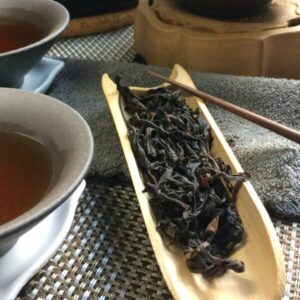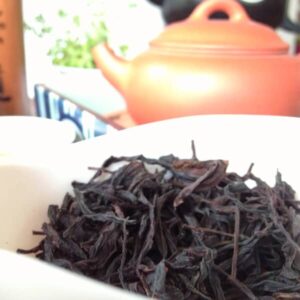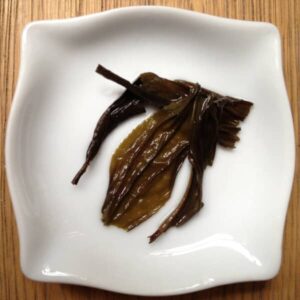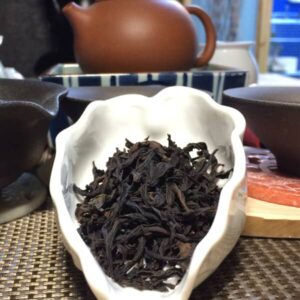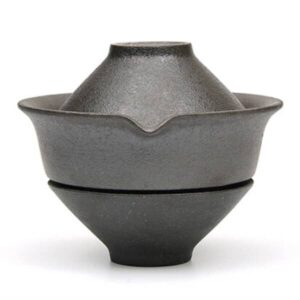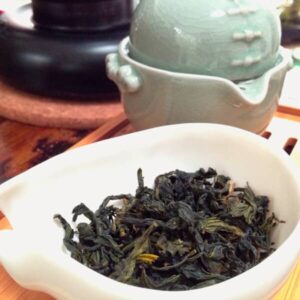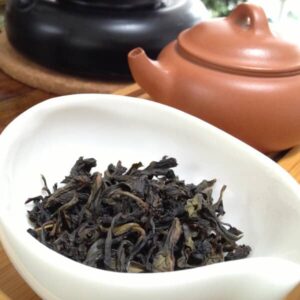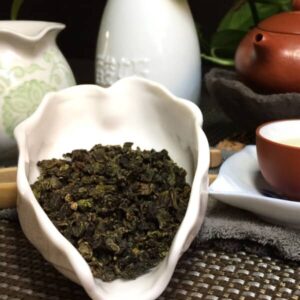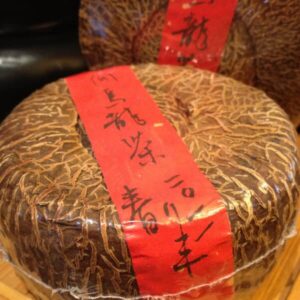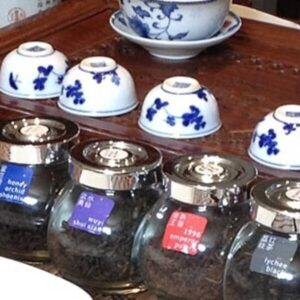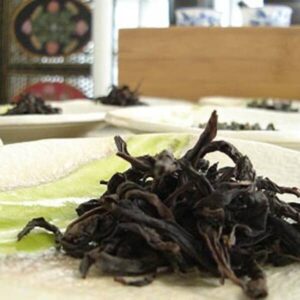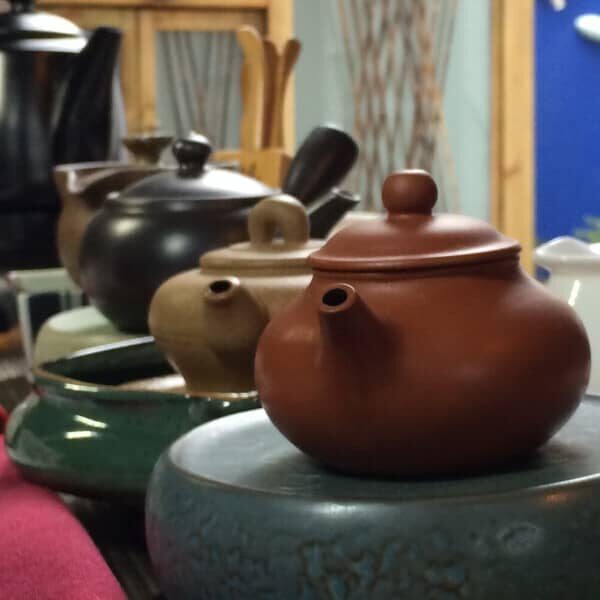Discover A World Of Black Dragons
Oolong Teas
Oolong teas, also known as ‘wu long’, blue teas, ‘black dragon’ teas, combine the fresh flavour and aromatic quality of green tea with the smooth body and rich, dark roastiness of black tea. Fine oolongs are produced in Taiwan and mainland China, with the former tending to be lighter in colour and flavour.
Oolongs comprise a broad range of flavour and aromatic profiles, having undergone partial enzymatic oxidation, from 20% oxidised to 80%. This great variety of taste profiles also arises because oolong tea may come from many sub-species of the ‘camellia sinensis’ tea bush and be grown in many diverse soil, altitude and weather conditions. Besides that, the tea will often be infused several times, with each re-brew bringing different flavours and aromas to the fore.
Lightly oxidised oolongs are often hand-rolled into the form of tight pellets, which open and unfold on brewing. Generally this group of teas is incredibly fragrant, whether lightly floral or with deep caramel tones. The darker, more oxidised oolong leaves, when brewed, produce a liquor that runs from yellow or a pale brown at one end of the spectrum to bright green.
All oolongs are usually classified 4 groups based on its provenance. The four regions are Anxi (South Fujian Province), Wuyi (North Fujian Province), Phoenix (Guang Dong Province) and Formosa (Taiwan).
Chinese tea drinkers often compare the flavour of dark oolong teas to ripe fruit, such as peaches and plums. Light oolong teas tend to be floral and delicately sweet. Some astringency is prized, as well as the ticklish and sweet aftertaste that lingers at the back of your mouth and throat after tasting the tea, a sensation called hou yun or ‘throat resonance’.
OUR OOLONG TEAS
Formosa (‘Beautiful’) was the Portuguese name for Taiwan, the ‘youngest’ oolong region. Tea produced there is as sublime as the landscape of mist-shrouded mountain peaks amid which it grows.
Formosa oolongs typically exude a distinctive, floral ‘green fragrance’ (qing xiang) which is a result of low oxidation.
OUR FORMOSA OOLONG TEAS
The sub-tropical climate and rich soil of mountainous Anxi in Fujian produce the distinctive dark, thick, glossy, serrated leaves of the Iron Goddess of Mercy oolong tea bush. This is a lovely oolong, intensely flavourful and aromatic, with notes of ranging from florals, stone-fruits, honey and nuts.
OUR ANXI OOLONG TEAS
Phoenix Single Bush or Single Grove (‘Dan Cong’) is a fascinating oolong category. Each varietal traces its DNA directly, via many generations of careful selective breeding, back to one of 18 venerable ‘mother’ bushes.
These ancient bushes continue to thrive after a thousand years on the slopes of Wudong Shan, over 1100 meters above sea level. This forms part of the Phoenix mountain range (Fenghuang Shan) in China’s eastern Guangdong province.
OUR PHOENIX OOLONG TEAS
The craggy slopes of Wuyi Mountain in Fujian province are where oolongs were first created. Using time-honoured methods the leaves are sun-withered, bruised then oxidized to a high level, and finally roasted over charcoal.
This produces the tea’s dark, twisted appearance and rich, roasted flavour with its characteristic notes of burnt sugar, cocoa, fruit and spice.
OUR WUYI OOLONG TEAS
Take part in the beautiful Chinese ‘gongfu cha’ tea ceremony while we shares with you our love of tea. You’ll discover how to appreciate the finer nuances of tea like a true connoisseur, yet in a light and relaxed setting.
You’ll be introduced to gorgeous teas with fascinating, evocative names like ‘snow buds’, ‘honey orchid phoenix’ and ‘dragon well’. The incredible range of flavours and aromas will amaze you.
~~ Whilst we patiently wait for the effective control of COVID-19 pandemic, our popular tea masterclasses are held online via our “Teas in the Clouds - Brew-along Masterclass”. ~~
OUR TEA MASTERCLASSES
Oxygen. Wonderful stuff.
But it also oxidises things: think iron rusting or copper coins going that weird green colour and the cut side of apple turning brown. Fresh tea leaves, like apples and other plants, have an enzyme called polyphenol oxidase. It is capable of oxidizing polyphenols which are very important molecules for protection against infections to giving them their pigments.
Polyphenol oxydase and the polyphenols themselves are stored in the plant’s cells, but when the cells are damaged, say by slicing an apple or dropping and bruising it, the cells are ruptured and the enzyme comes into contact with air. With the help of oxygen in the air, the polyphenol oxidase initiates a series of chemical reactions, transforming the polyphenols and eventually producing melanins (brown pigments).
The general name for this process is “enzymatic browning,” and the fabulous thing (for tea at least) is that it doesn’t just change the appearance of produce: it also alters flavour, scent, and nutritional value.
LET’S GO PICK SOME TEAS


